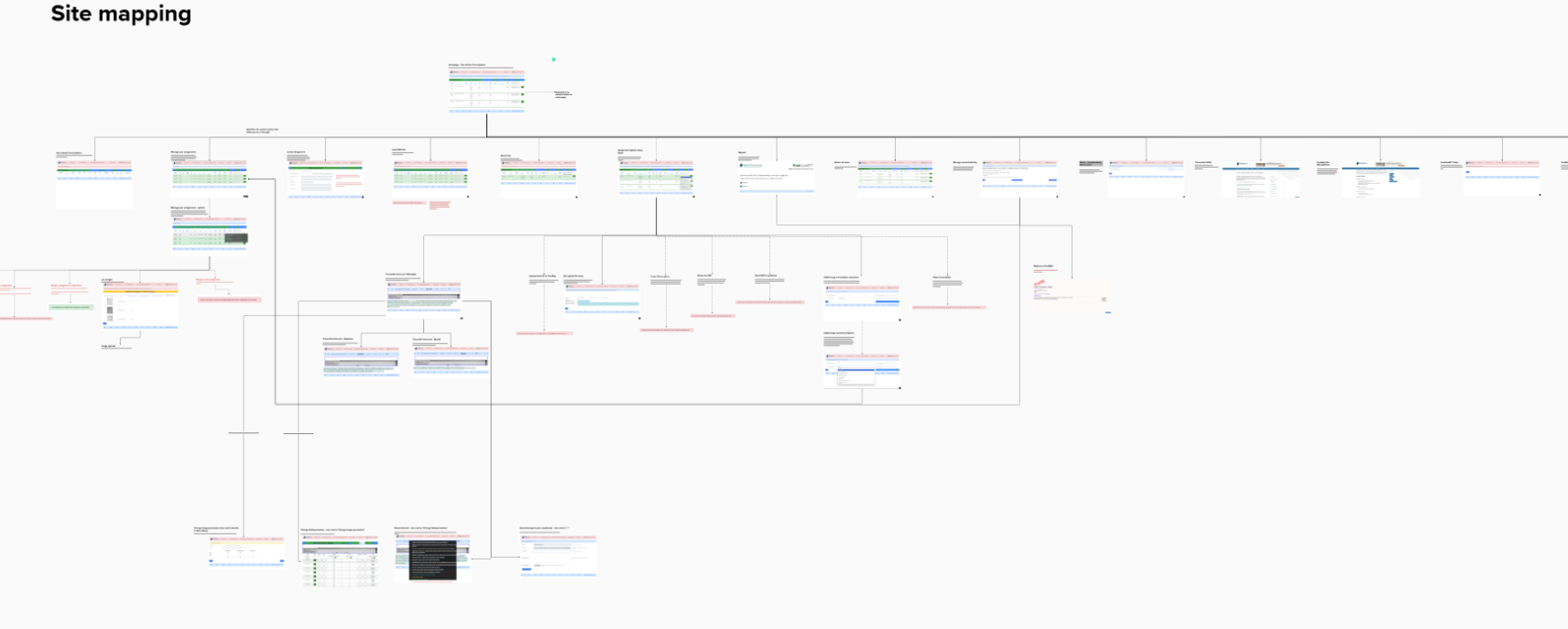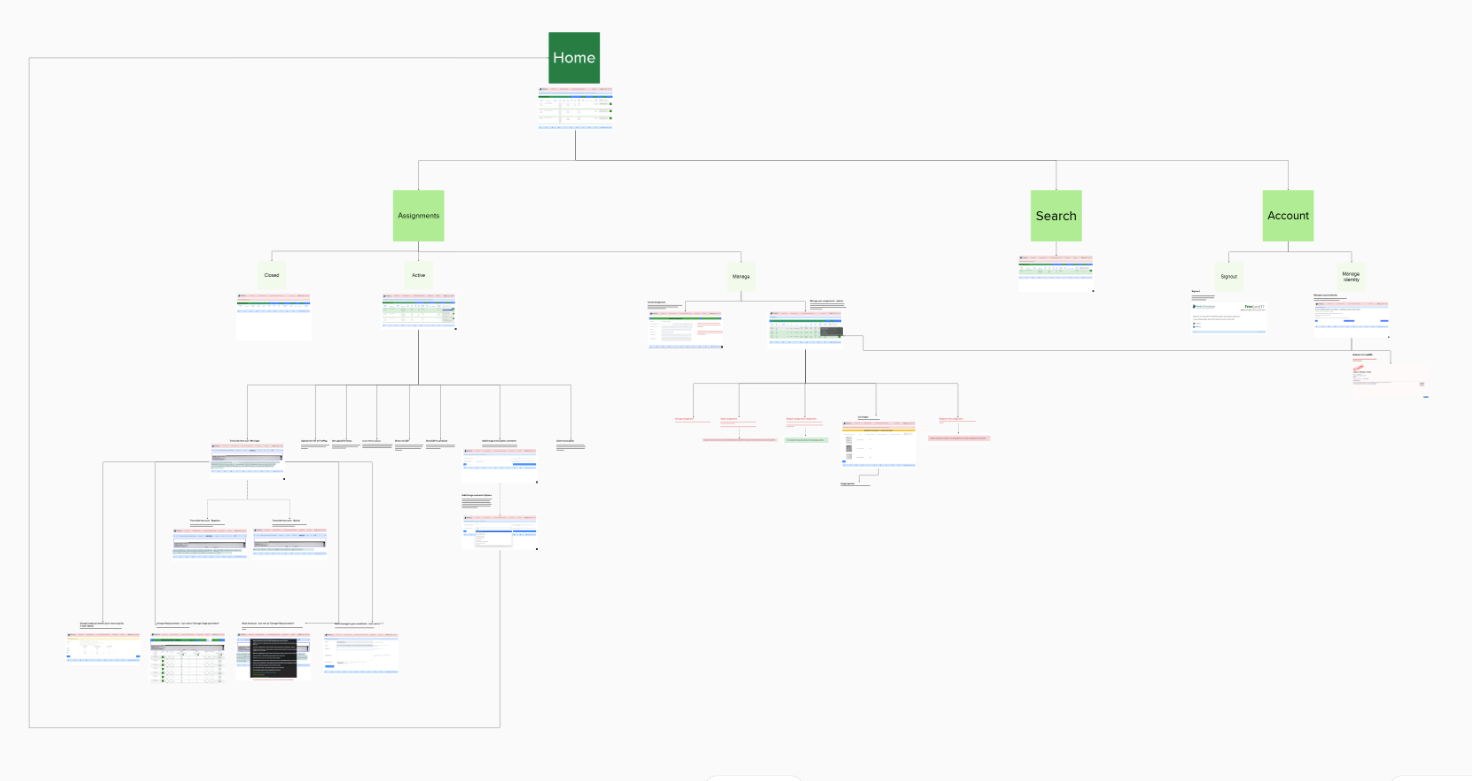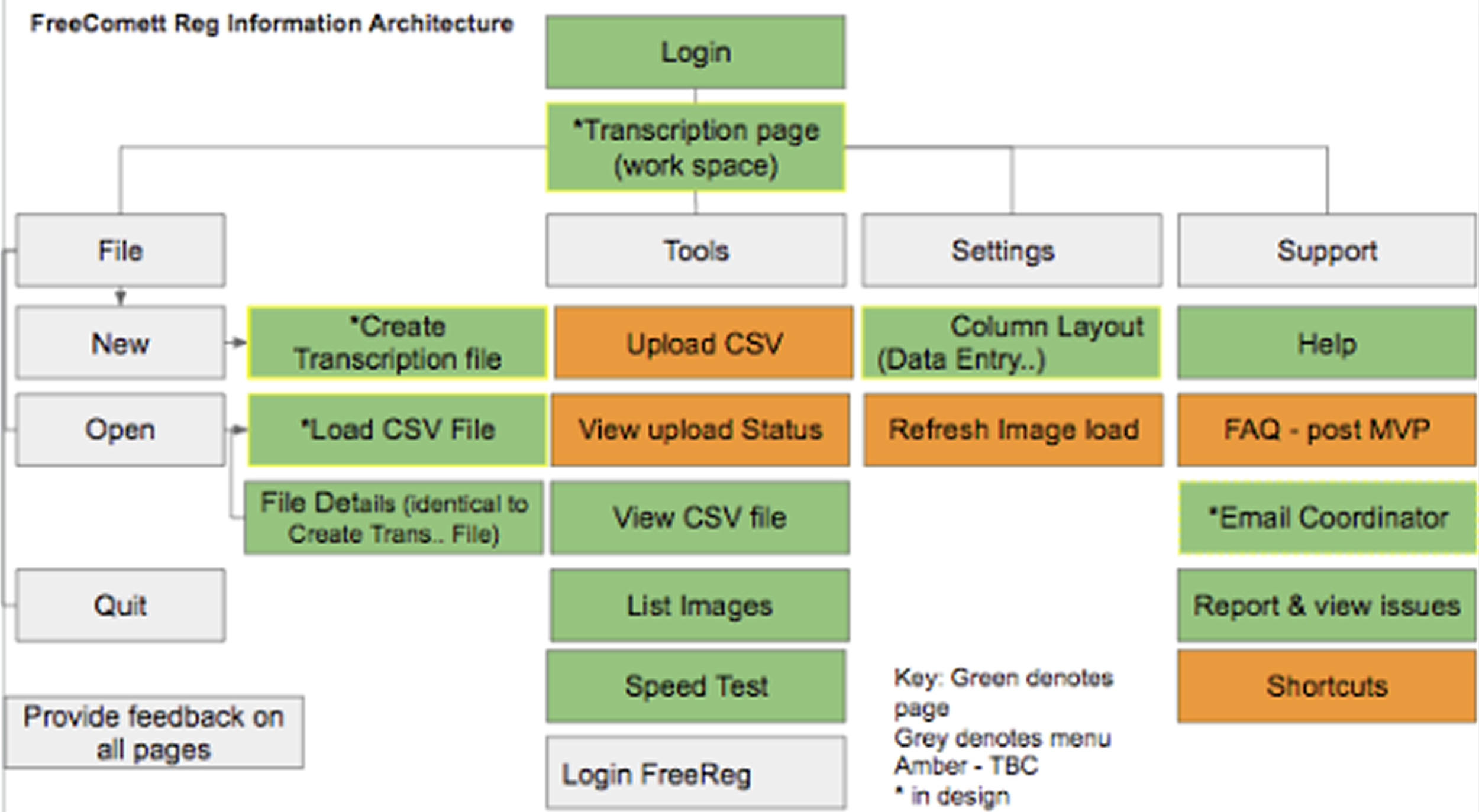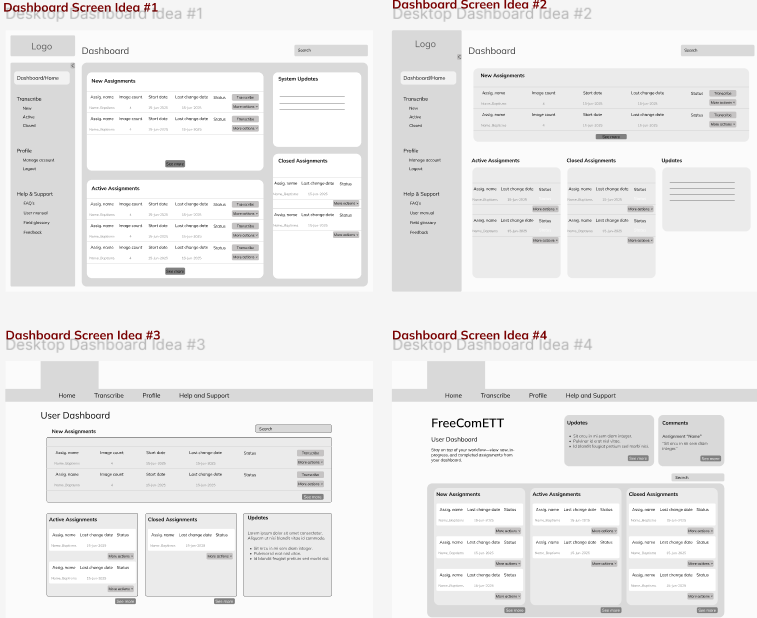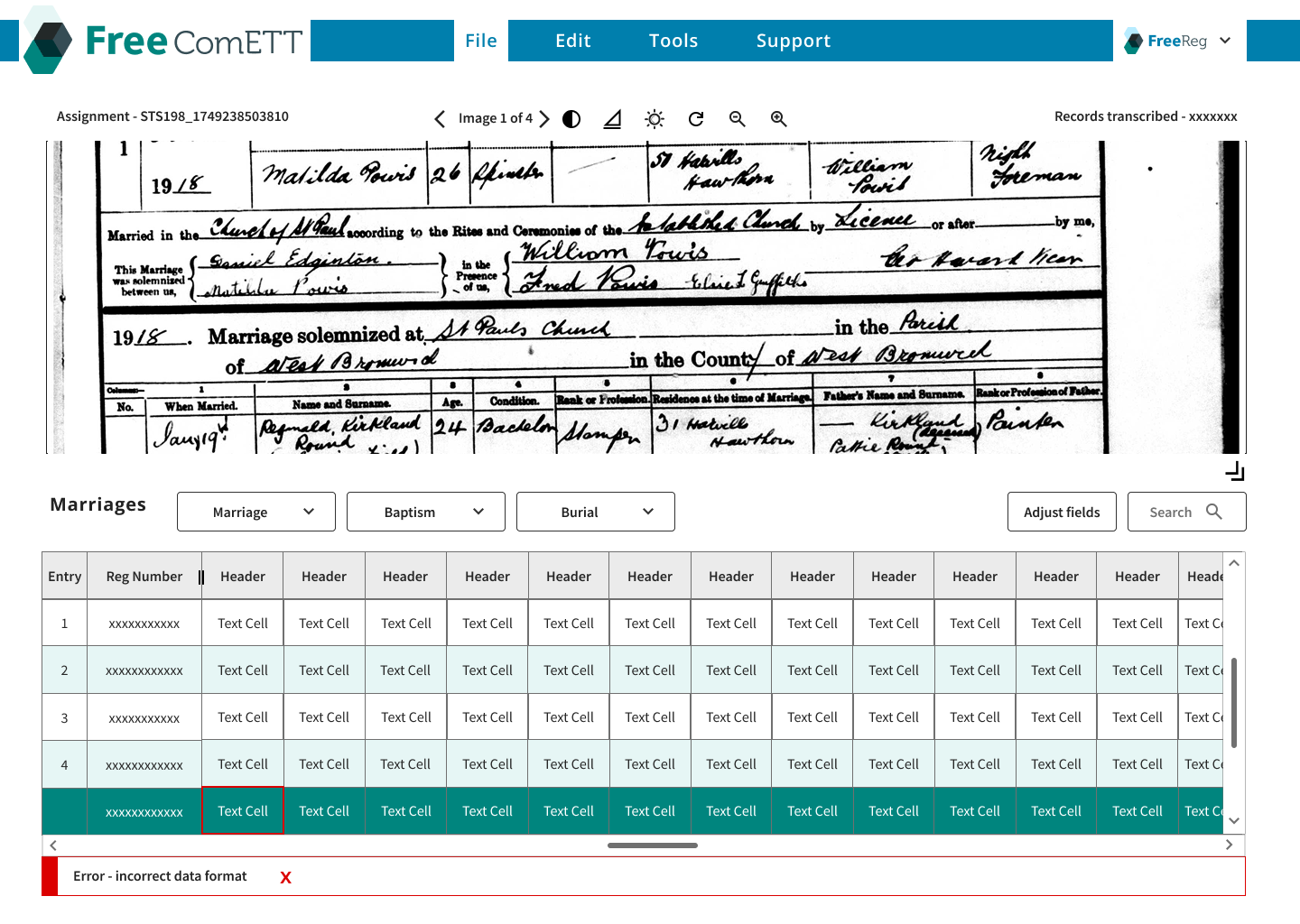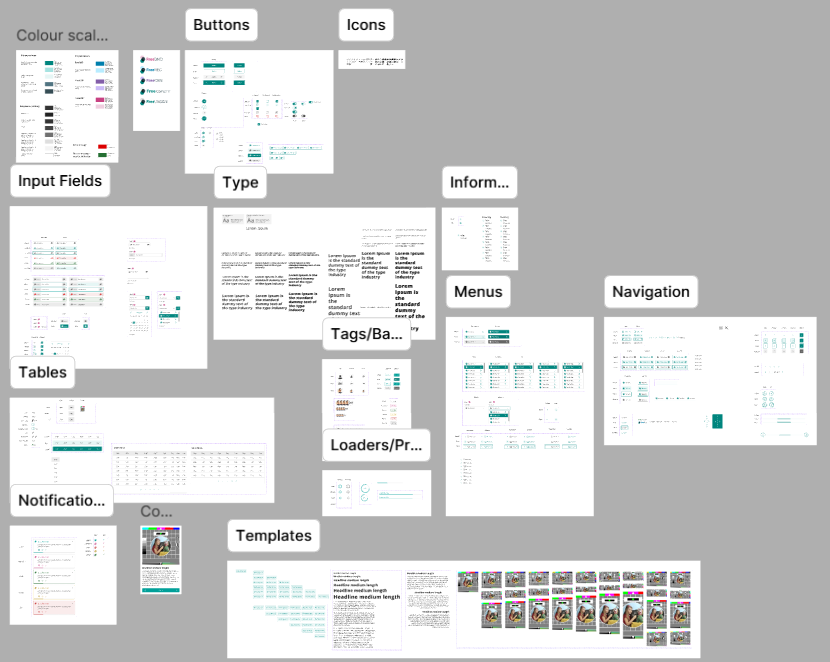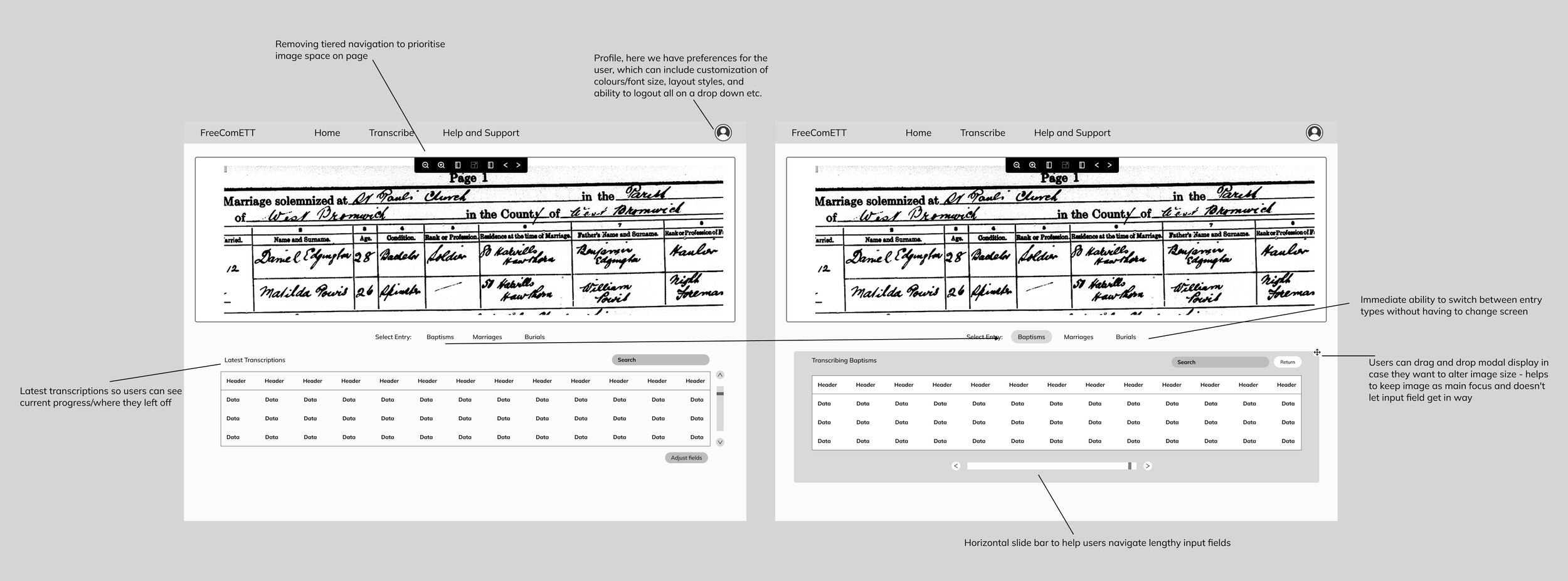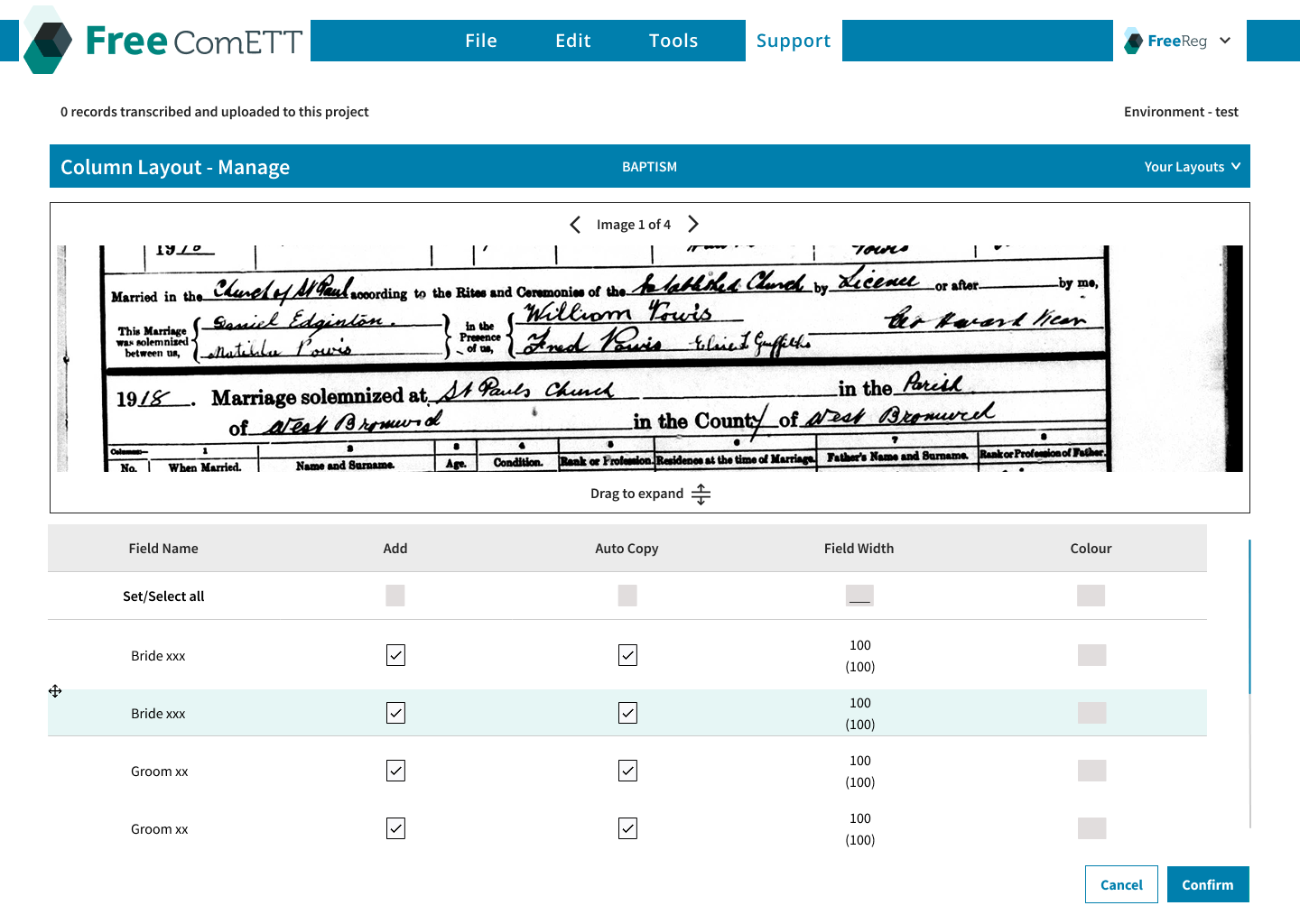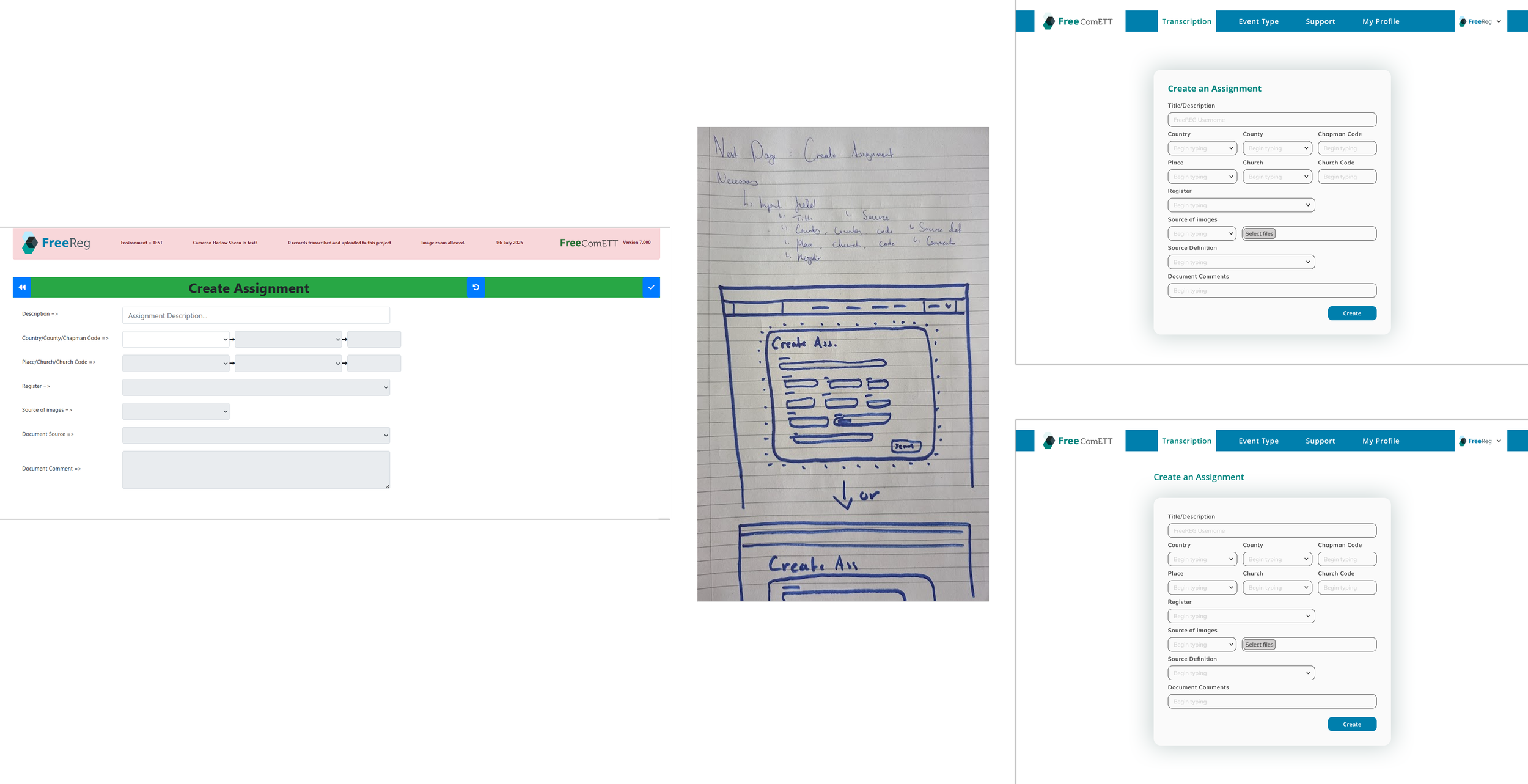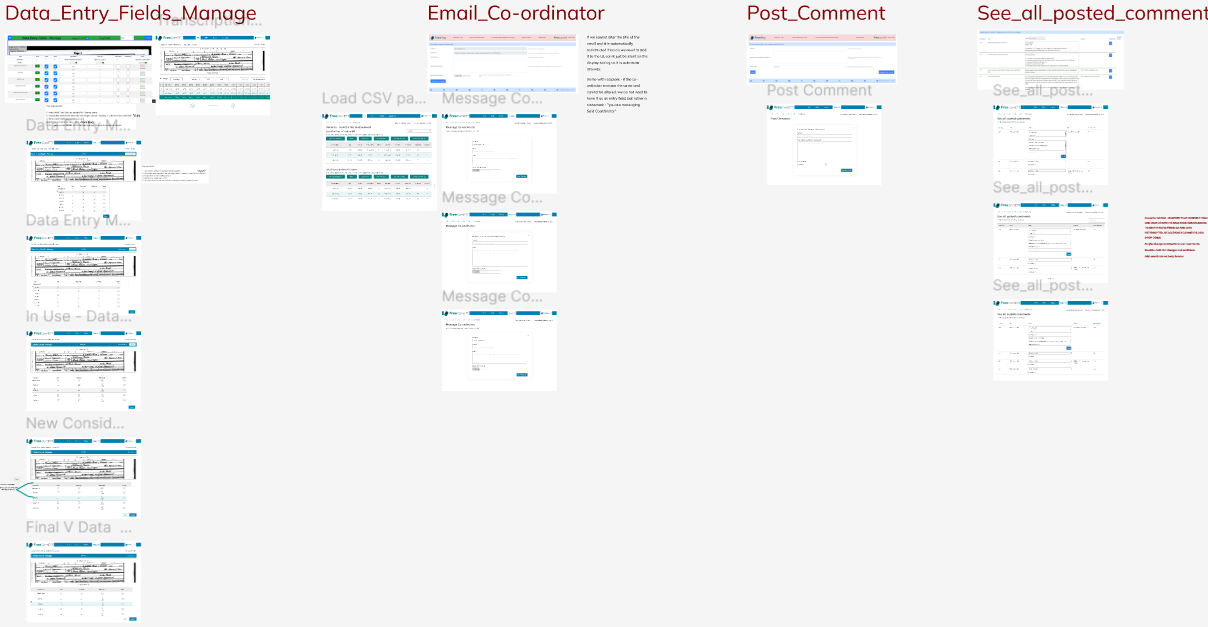FreeComETT - Transcription Web Application
Team Volunteering Project
Project Duration: May - Present
Role: UX/UI Designer, Research Support
Responsibilities: Research, Wireframing, Prototyping, UI Design
Methodology: Agile/Scrum
Project Overview
FreeComETT is a digital transcription tool developed for FreeUKGenealogy, an organisation dedicated to providing free access to family history records. The platform enables volunteers to transcribe records of births, marriages, and deaths to be uploaded to the charity’s main database. Unlike a traditional website, FreeComETT is being built as a product-first application, with usability, efficiency, and volunteer engagement at its core. Our job was to help redesign the platform, placing empthasis on the users needs and experience to drive a functional and user friendly product.
The Primary Objective
To transform the current, technically functional build into something actually usable and enjoyable for end-users. Up until now, the product had been led entirely by the development team, with no consideration for usability.
Following several Scrum meetings and initial discovery sessions with fellow UX volunteers, the core UX goal was defined:
Make the transcription process (the core function of FreeComETT) as intuitive and user-friendly as possible.
Therefore focussing our design process to:
Streamline the user journey
Minimise friction in interactions
Design with volunteers’ needs and limitations in mind
My Role as a Junior Designer
Joined introductory meetings with developers, designers, and stakeholders
Took part in Agile Scrum ceremonies
Contributed to early product and UX discussions
Collaborated with developers to understand technical goals and constraints
Partnered with senior UX designer to:
Audit site pages (screenshots, content, layout)
Map primary user flows
Analyse navigation and interactions
Helped define the main UX goal: improve transcription usability
Supported creation of sitemap and information architecture
Designed an initial homepage (parallel design process)
Focused on understanding user pain points and needs
Continued with the design process, collaborating with designers, developers and stakeholders in meetings and design crits to establish layout, content and design goals for future development.
Create a functional, user friendly solution for the FreeUKGenealogy team to develop and be ready for public launch by the end of the year
Developing an understanding
Team Collaboration & Agile Participation
I joined the FreeComETT team right at the start, during the discovery phase, and took part in early meetings with the developers, designers, and key stakeholders. I quickly got involved in Agile Scrum sessions, which really helped me get to grips with the project’s goals, who we were designing for, and how the team worked together.
One of the most interesting parts early on was learning about the transcription process itself—something completely new to me.
I spent time understanding what it involves, why it’s important, and what motivates volunteers to do this kind of work. It gave me a whole new appreciation for the people behind the platform and really shaped how I approached the user experience. Having this understanding was important for my design process - helping to reinfroce a user centric approach and mindset moving forwards.
I also joined in on early product discussions, shared initial ideas, and asked lots of questions. Working closely with the developers and more experienced team members gave me insight into the technical side of things and helped me understand the bigger picture of where the product is heading.
Understanding the Process and Users
Once the discovery phase wrapped up, I got stuck into the project by really getting to know how the current product worked and how people used it.
I started by screenshotting every page, mapping out all the links, and building a clear picture of the site’s hierarchy. Collaborating with the design lead on the project, we used Mural to create a shared document, producing our own versions to later discuss and bounce ideas off one another.
Along the way, I spotted patterns and re-used elements that we could carry over into the new designs to save time later.
Working alongside the senior designers was a great learning experience—it helped me see how to balance user needs with what’s technically possible.
Once we’d locked in a more refined sitemap, it gave us a clear roadmap for the rest of the designs and made sure the navigation made sense from start to finish. This process involved great contribution from both the design team and the development team, along with the Subject Matter Expert providing great insight and advice into the final output
Together with the stakeholders and dev team, we nailed down what the Minimum Viable Product (MVP) should be. This meant agreeing on the features that were absolutely essential and leaving the “nice-to-haves” for later. Having that clarity from the start really helped us stay focused and kept the design work heading in the right direction.e end of the year
Establishing Priorities and Design
Moving onwards
With the MVP defined and the information architecture finalised, the focus shifted to designing the initial pages. Due to time constraints and the presence of existing templates, our meetings centred on aligning the team around design decisions and efficiently delegating tasks.
The first major design challenge was the homepage. I used the current version as a foundation but restructured it around the key user actions identified through stakeholder discussions.
My initial approach was to structure the homepage around a dashboard-style layout, giving users the ability to view tasks, create new ones, and access existing assignments — all within a single screen. This user-centric concept aimed to centralise key actions, ensuring everything was immediately accessible.
However, the development team raised concerns that this direction extended beyond the agreed MVP scope. While the project manager and team lead were enthusiastic about its potential, the idea was deferred as a future enhancement rather than implemented at this stage. Instead, we proceeded with a more streamlined version that aligned strictly with the MVP requirements.
This design critique process proved incredibly valuable. It helped me confidently present bold ideas, listen to feedback without attachment, and pivot towards viable alternatives — ultimately strengthening my decision-making and collaboration skills.
After finalising the homepage, I applied the same principles to other key screens, including the Transcribe from Scan main page. My priority was to maintain clarity and usability, ensuring volunteers could begin tasks quickly without confusion or cognitive overload. I took the lead on many of the main project pages and regularly conversed with both the devs and project management in regular scrum meetings to ensure my designs aligned with the established goals and user needs; making tweaks as and when necessary.
Throughout the process, I stayed closely aligned with the FreeComETT colour palette, component library, and style guide. It was also important to collaborate with the other designers to ensure visual cohesion across our work. This experience strengthened my ability to design within a shared system while still contributing creatively.
Creating Solutions
I also revisited and refreshed several legacy screens using the updated styles, then circulated them to the development team for review. Having an established design system made it far easier to maintain consistency across the platform while iterating efficiently. I carefully plotted the new pages, taking into consideration user ease, comfort and the actual purpose of the page itself; noting down the intended fucntion of eaxh page during my intial paper wireframes to ensure each design remained central to its actual purpose.
Feedback, Progression and Continuation
Weekly catch-ups with developers, SMEs, and stakeholders quickly became a core part of the workflow. These sessions gave me the opportunity to present new designs, explain my reasoning, and collect targeted feedback that fed directly into the next iteration.
Collaborating closely with the senior designers was especially valuable. It helped me better understand how to balance user needs with technical feasibility—ensuring that designs weren’t just intuitive, but also realistic to build.
Once the final design guidelines were agreed, they became a solid roadmap for the remaining pages. From that point onward, collaboration across the team felt fully aligned, with every decision tying back to a shared vision.
Iterations for each Page
Over time, the designs continued to evolve. Each page went through several versions, with every iteration getting us closer to where it needed to be. The collaborative meetings played a huge role in that process—they helped shape the ideas, challenge assumptions, and push the designs forward until we eventually landed on the final versions.

